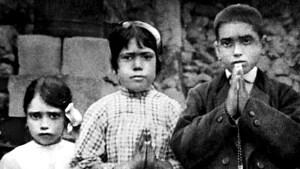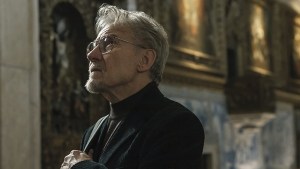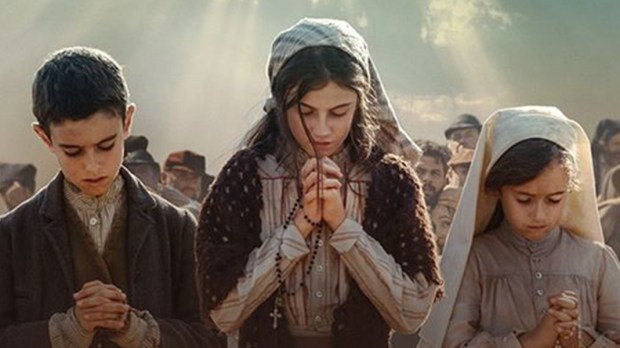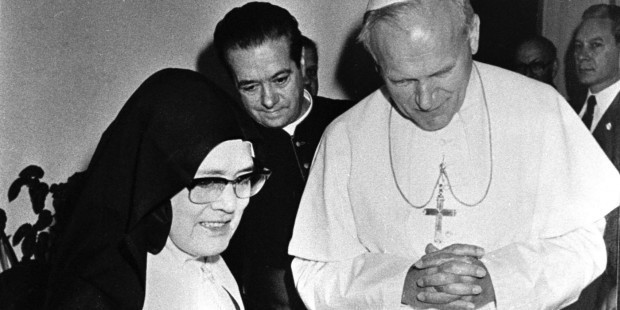Things change. Take movies for instance. In 1952, director John Brahm brought to the big screen The Miracle of Our Lady of Fatima, the true story of three children in 1917 Portugal whose visions of the Virgin Mary shook the world. Chances are better than average that most Catholics of a certain age have seen Brahm’s work, and why not? It’s a well-crafted, pious work tailor made to capture the hearts of true believers everywhere.

Read more:
The Eucharistic miracle that occurred at Fatima
Ah, but things change, don’t they? For one, it’s not so easy these days to get modern moviegoers to watch the classics, no matter how well made they are. Acting styles are different now; so is the technology. To the present-day viewer, an old movie from 1952 often just seems, well … old. That being the case, the time is probably right for a film that revisits the story of those three children. And now we have one in director Marco Pontecorvo’s new feature, Fatima.
Those familiar with the story will find the basic facts all in place. With World War I in full force, the people of Portugal were desperate for any sign of peace. That sign came in the spring of 1917, when nine-year-old Lúcia dos Santos and her younger cousins Jacinta and Francisco Marto claimed they were receiving messages from an apparition of the Holy Virgin. As word spread and pilgrims started to flock to the parish of Fátima, the intensely anti-clerical authorities tried to put a stop to it all, though to no avail. The visions culminated in the famous Miracle of the Sun, in which thousands of witnesses purported to see Sol turn into a spinning disc and hurtle towards the Earth before returning to its natural state.
Like its well-known predecessor, Fatima is a well-crafted retelling of these events, albeit in a manner more fitting of the times. The acting is more naturalistic, with Stephanie Gil in particular turning in a fine performance as the young Lucia. The settings are less stagey than the Brahm movie and look more like what you would expect from an impoverished village suffering under wartime conditions. And when it comes to set pieces like the Miracle of the Sun, well, there’s this little thing now called CGI that the filmmakers use to liven such scenes up a bit.
As for the reverential tone of the 1952 film, that also mostly remains intact in Fatima. But things do change. Piety, alas, is not a big draw for a lot of today’s more secular minded audiences. They need a different way into the story, and that comes in the form of Harvey Keitel. In a series of fictionalized vignettes interspersed throughout the film, the venerable actor plays a skeptical professor/author come to interview the 82-year old Lucia, now a Discalced Carmelite nun known as Sister Maria Lúcia of Jesus and of the Immaculate Heart. (In reality, Sister’s Lúcia’s status as a cloistered nun prevented her from such visitors, though she communicated with the wider world in books and letters, and made four brief return visits to Fátima on the occasion papal pilgrimages.)
It is the professor’s intent to pick at Lucia’s memories until he confirms his pet theory regarding the events surrounding Fatima. Said theory is that Lucia crafted an imaginary maternal figure to provide her the love and attention she wasn’t getting from her real mother. The cousins, they simply played along because it was fun. The Miracle of the Sun, of course, could easily be dismissed as a freak meteorological disturbance. The fact that a few kids somehow predicted an unpredictable event to the day it happened, that was just lucky coincidence. In short, Keitel’s skeptic already has all his conclusions in hand before ever talking to Lucia; he just wants her to admit he’s right. She doesn’t.

Read more:
Harvey Keitel talks faith and his role in upcoming ‘Fatima’ film
The gentle back-and-forth between Keitel and the wonderful Sônia Braga, who plays the older Lucia, is fine, but whether it’s necessary will be up to personal taste. Those who might prefer a simple updated version of the story may find the later-day scenes intrusive. Those who don’t mind a bit of religious debate thrown into the mix will appreciate them. Either way, Fatima is still a respectful revisit to the tale of Lucia and her family. It’s also, in the end, a reaffirmation of the message delivered to those children back in 1917, that the world needs our penance and our prayers, and it needs them right now. Some things, it seems, never change.


